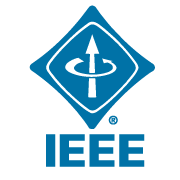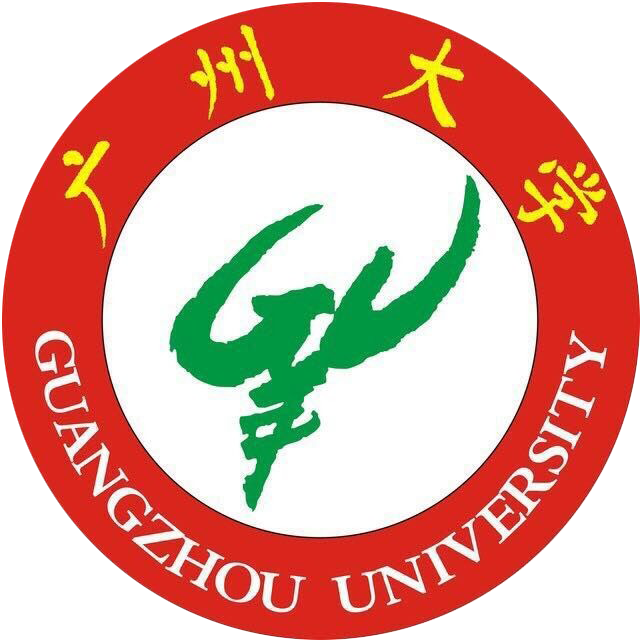Part I: Invited Talks - Morning Sessions (8:30am-12:30am, October 7, Sunday)
Invited Speaker 1: Prof. Valentina Emilia Balas, “Aurel Vlaicu” University of Arad, Romania
Title: Brain-Inspired Nano Architectures
Invited Speaker 2: Prof. Ioan Ungurean, Stefan cel Mare University of Suceava, Romania
Title: Fog computing and Industrial Internet of Things
Invited Speaker 3: Prof. Avatamanitei Sebastian-Andrei, Stefan cel Mare University of Suceava, Romania
Title: Visible Light Communication
Invited Speaker 4: Dr. Yinglong Dai, Hunan Normal University, China
Title: Building Healthcare Information Loop Using Deep Neural Networks
Invited Speaker 5: Dr. Muhammad Arif, Guangzhou University, China
Title: Fast Curvelet Transform through Genetic Algorithm for Multi-modal Medical Image Fusion
Invited Speaker 6: Dr. Muhammad Faizan Khan, Guangzhou University, China
Title: Gait Recognition in Parkinson’s disease using Wi-Fi Signals
Part II: Invited Talks - Afternoon Sessions (2:00pm-6:00pm, October 7, Sunday)
Invited Speaker 7: Prof. Zhong Fan, Keele University, UK
Title: Smart energy networks – research challenges and AI applications
Invited Speaker 8: Prof. Raymond Choo
, The University of Texas at San Antonio, USA
Title: Cyber Security Threat Intelligence: Challenges and Research Opportunities
Invited Speaker 9: Prof. Richard Hill, University of Huddersfield, UK
Title: Video analytics: coping with the potential of smart cities
Invited Speaker 10: Dr. Md. Zakirul Alam Bhuiyan, Fordham University, USA
Title: Fusion Trustworthiness in Cyber-Physical Systems: Focusing on Structural Health Monitoring Applications
Invited Speaker 11: Prof. Kouichi Sakurai, Kyushu University, Japan
Title: “Receipt-freeness” , “Coercion-resistance” and "Deniability" of online authentication for our social life IT-systems
Invited Speaker 12: Prof. Peter Muller, IBM Zurich Research Laboratory, Switzerland
Title: Quantum Computing Technology towards Applications
Invited Speaker 13: Dr. Peng Li, The University of Aizu, Japan
Title: Intelligent Collaboration of Air-Ground Vehicles for Smart Cities
Detailed Information about Invited Talks
|
| 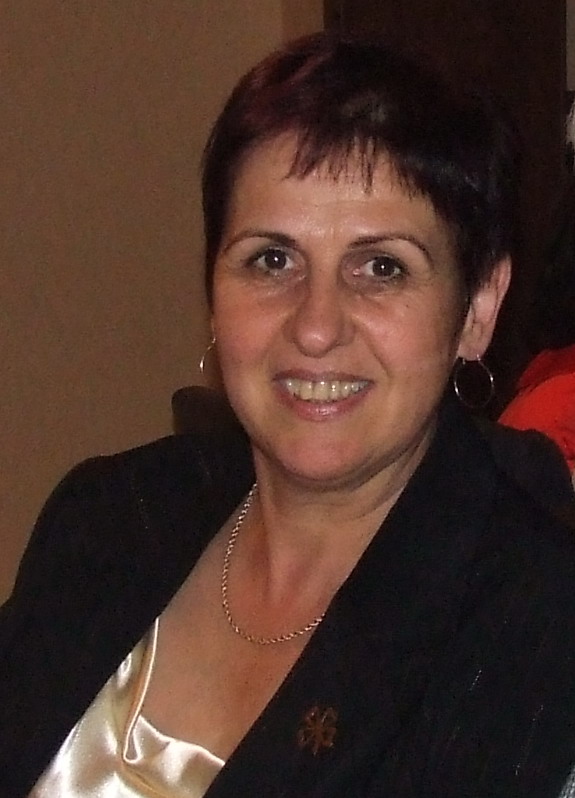 |
Title: Brain-Inspired Nano Architectures
Invited Speaker 1: Prof. Valentina Emilia Balas
“Aurel Vlaicu” University of Arad, Romania
|
Abstract. The lecture presents new research directions of our team in the realm of Brain-Inspired Nano Architecture for integrated circuits in order to achieve low power consumption and high reliability computing for the devices of the future.
Computers and brains differ significantly at all scales. Brains are organized of neurons filled with salt water and different organic compounds, whereas computer consists of metals and semiconductors. Neurons can communicate based on electrochemical activity, whereas computers use electrical information “0” and “1”. Neurons are organized in highly interconnected complex circuits, much more than any electronic circuit used in computing.
Our approach is dealing with the gated ion channels which can be considered the nano-switches of the brain. This will allow us to analyze the statistical behavior of arrays of such brain-inspired devices. Moore and Shannon introduced a particular class of two-terminal networks, known as hammock networks. These kinds of networks are potentially important to applications in nanoelectronics as well as in biology. Taking inspiration from axon communication, which relies on ion channels distributed on cylindrical structures, we introduce a generalization of the classical hammock networks. We focus on evaluating reliability in the case of two terminal networks.
Biography. Valentina E. Balas is currently Full Professor in the Department of Automatics and Applied Software at the Faculty of Engineering, “Aurel Vlaicu” University of Arad, Romania. She holds a Ph.D. in Applied Electronics and Telecommunications from Polytechnic University of Timisoara. Dr. Balas is author of more than 280 research papers in refereed journals and International Conferences. Her research interests are in Intelligent Systems, Fuzzy Control, Soft Computing, Smart Sensors, Information Fusion, Modeling and Simulation.
Top↑
|
| 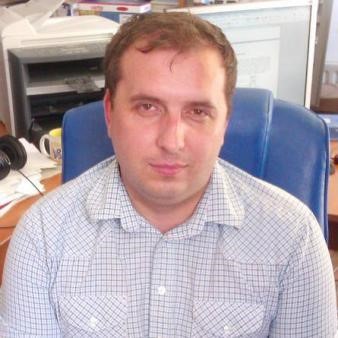 |
Title: Fog computing and Industrial Internet of Things
Invited Speaker 2: Prof. Ioan Ungurean
Stefan cel Mare University of Suceava, Romania
|
Abstract. Fog computing is a concept integrated in the Internet of Things (IoT) that uses advanced embedded devices, called fog nodes, in order to bring cloud services such as processing, storage and communication closer to the place where data are produced. In this talk it is proposed an architecture for a fog node that activates the Internet of Things for the devices form industrial environment (Industrial Internet of Things - IIoT) by integrating a set of fieldbuses, such as EtherCAT, Profinet, Modbus TCP/IP, Modbus RTU, CANOpen, and Profibus. Furthermore, it is presented a middleware Based Architecture for the Industrial Internet of Thing that integrate this fog nodes. The proposed architecture is designed around the Data Distribution Service for Real Time System (DDS) middleware protocol, and it is organized on four levels. Between these levels, it is defined standard interface, and they can be developed independently.
Biography. Ioan Ungurean received the M.S. and Ph.D. degrees in computer science from the Stefan cel Mare University of Suceava, Suceava, Romania, in 2008 and 2011, respectively. He is currently an Associate Professor with the Department of Computers, Stefan cel Mare University of Suceava. His current research interests include fieldbuses, real-time systems, real time operating systems, embedded systems, middleware systems, Internet of things, Industrial Internet of Things, and distributed data acquisition systems.
Top↑
|
| 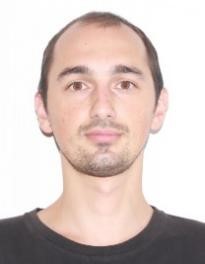 |
Title: Visible Light Communication
Invited Speaker 3: Prof. Avatamanitei Sebastian-Andrei
Stefan cel Mare University of Suceava, Romania
|
Abstract. In the context of an increasing alarming the levels of greenhouse emissions and the global energy consumption what is expected to increase with 30% by 2040 the global interest is materializing in a fast deployment and in falling costs for Eco-friendly energy technologies. One of these technologies is LED lighting what is expected to be the main source of the light in the next years. Outside of the low energy consumed and high performance the LEDs are capable of fast switching being suitable for communication purpose. As a result, a novel wireless communication technology has emerged based on Visible Light Communications (VLC) which provides an energy efficient solution suitable for indoor communications (e.g. hospitals, kindergarten, airplanes, chemical or nuclear plants) as well as for outdoor short-to-medium distance applications, such as inter-vehicle communications or communication-based traffic safety applications. VLC has a great potential for applications due to their relatively simple design for basic functioning, efficiency and large geographical distribution. But although VLC has been the focus of an intensive research during the last few years, the technology is still in its infancy and requires continuous efforts to overcome the current challenges, especially in outdoor applications. The presentation is aim at providing an overview of several research directions that could transform VLC into a reliable wireless communication component safe for the human health.
Biography. Avatamanitei Sebastian-Andrei received a B.S. degree in Applied Electronics Engineering (2013) and a M.S. in Informataion Management in Industry and Administration (2015) from the Stefan cel Mare University of Suceava (Romania). Currently, he is PhD student at University of Suceava (Romania) since 2017. His main research area is related to visible light communications, vehicle safety, sensors networks and biomedical signal processing.
Top↑
|
| 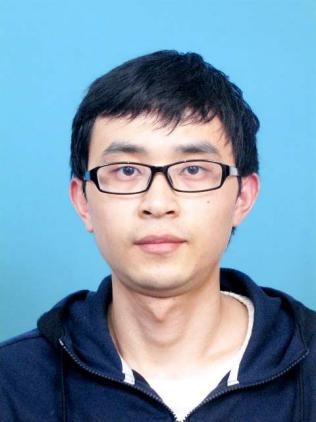 |
Title: Building Healthcare Information Loop Using Deep Neural Networks
Invited Speaker 4: Dr. Yinglong Dai
Hunan Normal University, China
|
Abstract. With the advances of information technology, the efficiency of medical processes has been promoted, and the public knowledge of healthcare has been enhanced. On the background of the advances of artificial intelligence technology, the direction of future medicine is becoming a considerable problem, including how to make the healthcare process more efficient and more dependable to reduce the heavy burdens of doctors and nurses through informatization and intelligentization. Healthcare is a dynamical process including a mass of complex interactions with the complicated dynamical system of human body. There are a lot of problems need to be carefully considered in order to apply artificial intelligence technology in healthcare process.
In recent years, as a powerful functional approximator, deep neural networks achieve a great success to process high-dimensional data in many research fields, such as computer vision, speech recognition, natural language processing, etc. Their recognition accuracy is approaching and even surpassing human level in some tasks. Based on deep neural networks, we propose a healthcare information processing closed loop, called Healthcare Information Loop (HIL), to promote the informatization and intelligentization progress of healthcare process. The healthcare-loop is composed of a diagnose unit, an entity unit, and an intervene unit. With respect to each unit, we built 1) a multi-channel conceptual alignment deep neural network framework for health state diagnosis, 2) a body simulator framework based on deep neural networks for body system simulation, 3) and a deep inference framework based on deep neural networks for intervention strategy evaluation.
Based on the proposed methods, we implemented a prototype simulation platform, including three modules: body simulator module, deep recognition module, and intervention evaluation module. The interactions of the three modules form an information closed loop. The framework can be used to simulate the changes of human body health states under different interventions and to evaluate the advantages and disadvantages of different healthcare strategies.
Biography. Yinglong Dai was born in Zixing, Hunan, China in 1988. He received B.S. and M.S. degrees in automation and control theory & control engineering from Northeastern University, China, in 2010 and 2012, respectively. He received a Ph.D. degree in computer science from Central South University, China, in 2018. From 2012 to 2013, he was an Electronic Engineer with the Research Institute of Intelligent Engineering, Sany Heavy Industry, Changsha, China. At present, he is a lecturer of School of Information Science and Engineering at Hunan Normal University, China.
His research interests include deep learning, deep reinforcement learning, and healthcare information processing. At present, he has 9 published papers, including 4 SCI-indexed papers and 9 EI-indexed papers (https://www.researchgate.net/profile/Yinglong_Dai).
Top↑
|
| 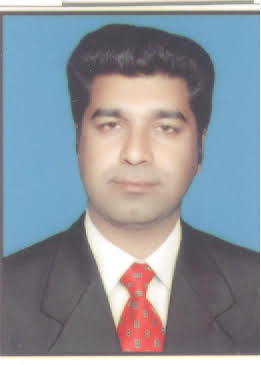 |
Title: Fast Curvelet Transform through Genetic Algorithm for Multi-modal Medical Image Fusion
Invited Speaker 5: Dr. Muhammad Arif
Guangzhou University, China
|
Abstract. In modern medicine, medical imaging modalities produce different types of medical images to facilitate clinician in their diagnosis of a disease or injury. Each imaging modality has its specific strength, for instance, some modalities are more superior to others in capturing detailed information on soft tissues structure. Therefore, many researchers in medical image processing have attempted to combine redundant and related information from multiple types of medical images to produce the fused medical image that can provide a additional condense and information enlightening image diagnosis for medical examination. Although, the already existing fusion techniques of medical image have low ability to provide an image fused that can sustain the information of fine details complacent from basic medical images. We propose a novel method, fusion method that is based on a curvelet transform and genetic algorithm (GA) for multimodal medical images. The implemented curvelet based approach enriches local information from the source images in both spatial and spectral domains. The application of GA in our approach is able to resolve the already existing doubtful and vagueness in the input images and can further optimize the features for image fusion. GA is coupled with copula distribution to identify the best possible solution for image fusion without repeatedly perform probability calculations. The proposed approach has been experimented on numerous groups of medical images and also compared with recent medical image fusion techniques. Our method results show that our approach outperforms the typical image fusion procedures in terms of the quantifiable image fusion performance. The outcome of our quantitative assessment and visual analysis denote that our proposed method has produced the highest superiority of the fused medical image than other approaches by maintaining the fine facts of information and colour complacent from the basic images. Statistical and visual analysis shows that the quality of the fused medical images significantly improved over the typical seven methods.
Biography. Muhammad Arif is PhD student in School of Computer Science and Technology, Guangzhou University, Guangzhou, China. Currently he is working on Privacy in Intelligent transportation System and vehicular communication. His research interests include image processing, E learning, Artificial intelligence and data mining. He joined Guangzhou University as a Scholar in September 2017 for the period of 3 years. Before this he completed masters and bachelor degrees in Pakistan. He received his BS degree in Computer Science from University of Sargodha, Pakistan in 2011. He obtained his MS degree in Computer Science from COMSATS Islamabad 2013 Pakistan. He is the editorial member of well reputed journals, as well as program committee member and organizer of many conferences. He published more than 30 SCI journal papers and more than 10 conference papers.
Top↑
|
| 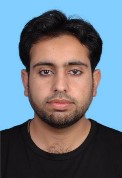 |
Title: Gait Recognition in Parkinson’s disease using Wi-Fi Signals
Invited Speaker 6: Dr. Muhammad Faizan Khan
Guangzhou University, China
|
Abstract. Parkinson's disease (PD) is a neurodegenerative disorder that affects predominately dopamine-producing (“dopaminergic”) neurons in a specific area of the brain called substantia nigra. Symptoms generally develop slowly over years like tremor, mainly at rest and described as pill rolling tremor in hands. There can be other forms of tremor as well. Other symptoms are bradykinesia, limb rigidity, gait and balance problems. The first step to living well with Parkinson’s disease is to understand the disease and the progression. So, there is need of adoption of proper technologies. It has been observed that with the growing research for IoTs particularly wireless signals as sensors, Wi-Fi has witnessed an increasing trend for numerous applications. Gait recognition using Wi-Fi signals is one of the most promising application which can be employed for detection of Parkinson’s disease. We envision that Wi-Fi signals can detect the special movements caused by neurodegenerative disorder.
Biography. Mr. Khan, Muhammad Faizan is a PhD student in Computer Science under the supervision of Prof. Wang Guojun at Guangzhou University since September 2016. He is currently doing research on application of Wi-Fi signals as sensors. Prior to that he was with the University of South Asia, Pakistan where he was serving in the capacity of lecturer in Department of Computer Science. Mr. Khan did his Masters of Engineering in Communication & Information Systems from a well reputed Chinese university, Huazhong University of Science & Technology. Mr. Khan has got papers published/accepted in reputed conferences like ISPA, ICUFN, DASC, UIC. Provided with strong background, Mr. Khan has research interests in mobile communications, radar signal processing and IoTs.
Top↑
|
| 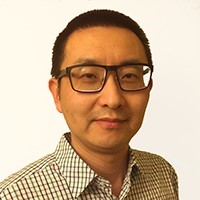 |
Title: Smart energy networks – research challenges and AI applications
Invited Speaker 7: Prof. Zhong Fan
Keele University, UK
|
Abstract. Affordable energy and clean growth is one of the key pillars of industrial strategies of many countries, with the aim to address the so-called Energy Trilemma: reduced costs to consumers, enhanced energy security and enabling the integration of low carbon technologies. For example, there is evidence that significant economic benefits can be secured for the UK from the development of smart energy solutions, including benefits from investing in a more efficient network, energy storage, the development of the supply chain, export potential, and the enabling of new and valuable downstream activities such as electric vehicles. In this talk I will discuss some of the research issues in smart energy networks and present our recent work on optimization and planning of local multi-vector energy systems. I will then introduce an exciting new project called SEND (Smart Energy Network Demonstrator) at Keele University. I will finish by presenting our ongoing work of applying AI techniques to smart energy systems.
Biography. Zhong Fan is a Professor and Academic Director of SEND (Smart Energy Network Demonstrator) at Keele University, UK, where he is leading R&D of a 15M pounds project that aims to build one of Europe's largest live smart energy demonstrator on Keele campus. Before Joining Keele, he was a Chief Research Fellow with Toshiba Research Europe in Bristol, UK, leading research teams on IoT, smart energy, and 5G communications. He led the team that pioneered the work on wireless mesh network solutions for smart metering that was instrumental in Toshiba’s win of a major smart metering contract in Japan. He is an advisory board member of the IEEE Industry Community on IoT. In his early career, he worked as a Research Fellow at Cambridge University, a Lecturer at Birmingham University and a Researcher at Marconi Labs Cambridge. He was also awarded a BT Short-Term Fellowship to work at BT Labs. He earned his BS and MS degrees in EE from Tsinghua University in China and PhD from Durham University. He has authored/co-authored over 160 papers in leading international journals and conferences and holds 35 patents.
Top↑
|
| 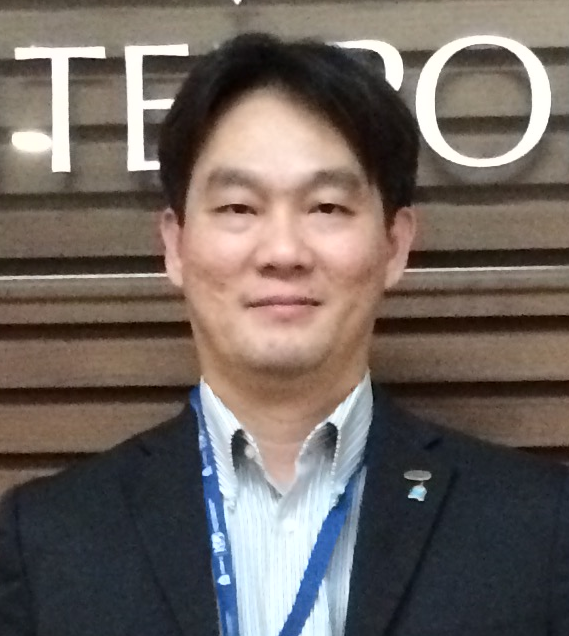 |
Title: The Dark Side of Cyber-Physical-Social Sensing
Invited Speaker 8: Prof. Raymond Choo
The University of Texas at San Antonio, USA
|
Abstract. Cyber threat intelligence and analytic is among one of the fastest growing interdisciplinary fields of research bringing together researchers from different fields such as digital forensics, political and security studies, criminology, cyber security, big data analytics, machine learning, etc. to detect, contain and mitigate advanced persistent threats and fight against organized cybercrimes. In this presentation, we will discuss some of the challenges underpinning this inter- / trans- /multi-disciplinary field as well as research opportunities (e.g. how can we leverage advances in deep learning to better predict cyber attacks?).
Biography. Kim-Kwang Raymond Choo received the Ph.D. in Information Security in 2006 from Queensland University of Technology, Australia. He currently holds the Cloud Technology Endowed Professorship at The University of Texas at San Antonio (UTSA). In 2016, he was named the Cybersecurity Educator of the Year – APAC (Cybersecurity Excellence Awards are produced in cooperation with the Information Security Community on LinkedIn), and in 2015 he and his team won the Digital Forensics Research Challenge organized by Germany’s University of Erlangen-Nuremberg. He is the recipient of the 2018 UTSA College of Business Col. Jean Piccione and Lt. Col. Philip Piccione Endowed Research Award for Tenured Faculty, ESORICS 2015 Best Paper Award, 2014 Highly Commended Award by the Australia New Zealand Policing Advisory Agency, Fulbright Scholarship in 2009, 2008 Australia Day Achievement Medallion, and British Computer Society’s Wilkes Award in 2008. He is also a Fellow of the Australian Computer Society, and an IEEE Senior Member.
Top↑
|
| 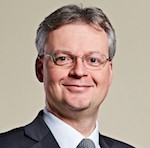 |
Title: Video analytics: coping with the potential of smart cities
Invited Speaker 9: Prof. Richard Hill
University of Huddersfield, UK
|
Abstract. Video capture is a core component of a smart city. The ability to record events presents the potential to automate the detection of objects, whilst also being able to develop enriched knowledge bases of event data. Video data is large in volume, fast (velocity) and is varied in nature. The augmentation of fixed video infrastructure such as CCTV, with mobile video capture from mobile handsets and emerging applications such as vehicle video, is stretching existing network infrastructures. This talk considers how our approach to technologies will need to change to accommodate future demands upon smart city network architecture.
Biography. Professor Richard Hill is Head of the Department of Computer Science, and Director of the Centre for Industrial Analytics, at the University of Huddersfield, UK. Professor Hill has published widely in the areas of Big Data, predictive analytics, the Internet of Things, and Industry 4.0, and has specific interests in digital manufacturing and smart cities.
Top↑
|
| 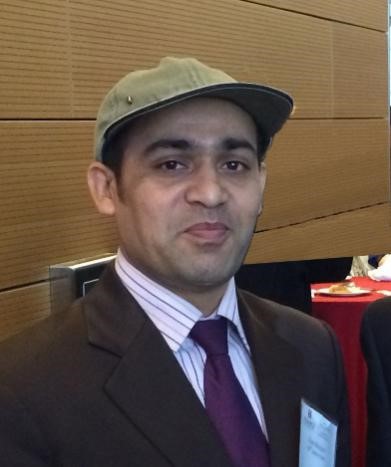 |
Title: Fusion Trustworthiness in Cyber-Physical Systems: Focusing on Structural Health Monitoring Applications
Invited Speaker 10: Dr.Md. Zakirul Alam Bhuiyan
Fordham University, USA
|
Abstract. Discovering data trustworthiness before data fusion should be a primacy preprocessing task in Cyber-Physical System (CPS), as the CPS can easily be a point of attraction for the cyber-attackers besides system faults, severe resource constraints (e.g., bandwidth and energy), and environmental problems. We find that when data compromise and alteration made before the fusion stage (such as at the time of measurement and during the data transmission) can lead the low quality of data (QoD) collection, which overall result in untrustworthy fusion results. We also find that the quality of monitoring (QoM) results can be affected by the untrustworthy fusion results. Thus, the trustworthy of the data generated from devices in the CPS play an important role in the fusion trustworthiness. We consider the fusion trustworthiness in case of CPS-based structural health Monitoring (SHM). The main idea the CPS based SHM is the identification of critical events such as damage in structures such as building, aircraft, etc. The identification of a situation completely relies on the fusion trustworthiness. State-of-the-art data fusion approaches suggested to improve these constraints do not satisfy SHM-specific requirements, such as fusion trustworthiness (such as the QoM). In this talk, I will highlight a set of observations similar to the situation above and propose some potential solutions to deal with the situations. I will also include a set of open areas of this research.
Biography. Md Zakirul Alam Bhuiyan, PhD, is currently an Assistant Professor of the Department of Computer and Information Sciences at the Fordham University, NY, USA. He is also a Visiting Professor of Guangzhou University, China. Earlier, he worked as an Assistant Professor at the Temple University. His research focuses on dependability, cyber security, big data, and cyber physical systems. He has over 120 papers published in prestigious venues, including top tier IEEE/ACM transactions/magazines. Two of his papers have been recognized as the ESI Highly Cited Papers in Computer Sciences. He has served as a lead guest/associate editor for IEEE TBD, ACM TCPS, IEEE IoT journal, INS, JNCA, FGCS, and so on. He has also received the IEEE TCSC Early Career Research Award (2016-2017) and the IEEE Outstanding Leadership Awards (2016, 2017, 2018), and so on. He has served as an organizer, general chair, program chair, workshop chair, and TPC member of various international conferences, including IEEE INFOCOM. He is a Senior Member of IEEE and a member of ACM.
Top↑
|
| 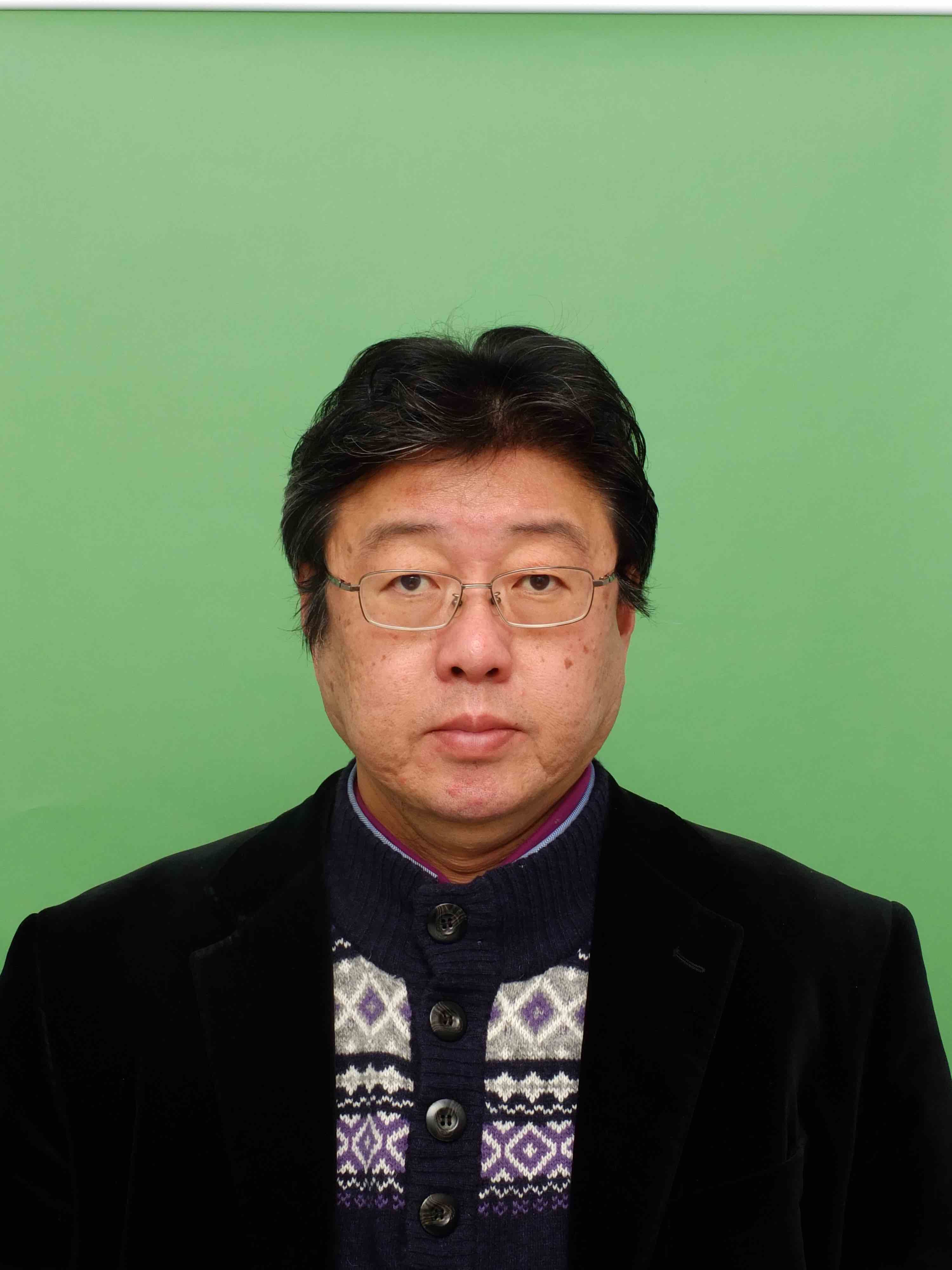 |
Title: “Receipt-freeness” , “Coercion-resistance” and "Deniability" of online authentication for our social life IT-systems
Invited Speaker 11: Prof. Kouichi Sakurai
Kyushu University, Japan
|
Abstract. Recently, online authentication including biometric is applied to various IT-systems in not only closed environment but open network. For security and privacy of such a system, compromising the biometric data is serious issue, because biometric systems require registrants’ enrolled templates and extracted feature of captured samples.Therefore, biometric authentication protocols with protection of the biometric data are developed, such as cancelable biometrics, zero-bio, etc. Security of these protocols originates in leakage of no privacy data by wiretapping, malicious access and etc. in the online authentication processes. When this data can be collected and used as an evidence of some user’ s authentication process by anyone, this situation causes novel privacy issue. We discuss this issue, which suggest us to design novel requirements of biometric authentication systems. As a first step of this argument, we consider two notions, "receipt-freeness" and "coercion-resistance". These are characteristics of remote biometric authentication protocols which mean a user or a third person do not obtain the above evidence to convince the third person. This paper mentions the case that communication between clients (user) and servers is observable. We analyze whether related biometric authentication protocols achieves "receipt-freeness" and "coercion-resistance", or not. We refer to yet another notion, deniability in cryptographic protocol and investigate the relationship of these three notions. We also introduce recent developed e-voting protocols based on Blockchain.
Biography. Kouichi Sakurai received the B.S. degree in mathematics from the Faculty of Science, Kyushu University in 1986. He received the M.S. degree in applied science in 1988, and the Doctorate in engineering in 1993 from the Faculty of Engineering, Kyushu University. He was engaged in research and development on cryptography and information security at the Computer and Information Systems Laboratory at Mitsubishi Electric Corporation from 1988 to 1994. From 1994, he worked for the Dept. of Computer Science of Kyushu University in the capacity of associate professor, and became a full professor there in 2002.
He had been working with the Institute of Systems & Information Technologies and Nanotechnologies, as the chief of Information Security laboratory, for promoting research co-operations among the industry, university and government under the theme "Enhancing IT-security in social systems". He has been successful in generating such co-operations between Japan, China and Korea for security technologies as the leader of a Cooperative International Research Project supported by the National Institute of Information and Communications Technology (NICT) during 2005-2006. Moreover, in March 2006, he established research co-operations under a Memorandum of Understanding in the field of information security with Professor Bimal Kumar Roy, the first time Japan has partnered with The Cryptology Research Society of India (CRSI). And concurrently he is working also with CyberSecurity Center of Kyushu University (https://cs.kyushu-u.ac.jp/en/), and doing joint project with IIT-Delhi on IoT-security (https://cs.kyushu-u.ac.jp/sicorp/en/). Professor Sakurai has published more than 350 academic papers around cryptography, information security, and CyberSecurity (See his DBLP http://dblp.uni-trier.de/pers/hd/s/Sakurai:Kouichi )
Top↑
|
| 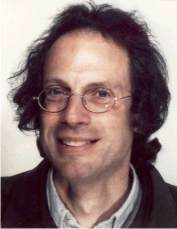 |
Title: Quantum Computing Technology towards Applications
Invited Speaker 12: Prof. Peter Muller
IBM Zurich Research Laboratory, Switzerland
|
Abstract. The upcoming quantum computing devices based on superconducting qubit technology are expected to outperform conventional computers in a growing number of algorithms, such as the computing of energy spectra or the dynamics of molecular or condensed matter systems. To gain the best performance, algorithms can be partitioned and placed to the appropriate modules of a tightly coupled quantum-classical processing system.
This talk will introduce in the superconducting qubit technology as we apply it in IBM. Some of the recently recognized challenges at qubit level regarding system architecture, but also the overall ecosystem will be outlined. Further, the integration of quantum computers into our computing environment to form a co-existing quantum-classical system will be reported. I will show developments towards useful quantum applications with potential advantage when running them on small sized quantum computing hardware. Such methods may enhance the efficiency of variational methods for quantum chemistry or optimization tasks with the prospect of carrying out scientifically and commercially relevant computations in the near future.
Biography. Peter Mueller joined IBM Research as a research staff member in 1988. His research expertise covers broad areas of computing systems architecture, microwave technology, device physics, nano science and modeling. His current field of research is in the areas of quantum technology and data center storage security. Peter is a co-founder of the IEEE ComSoc Communications and Information Systems Security Technical Committee (CIS-TC) and the emerging subcommittee on Quantum Communications and Information Technology (QCIT). In the course of his carrier he authored and co-authored more than 100 papers, 2 books, granted 25 patents and served as guest editor for many special issue publications. He also served as a government counsel and as organizer for international conferences and workshops, such as the IEEE International Conference on Communications, IEEE Globecom, IEEE Symposium on Systems and Information Security, International Wireless Communications and Mobile Computing Conference, WirelessCom, or the Electro and Information Technology Conference. In 2017 Peter got awarded by the Hungarian Scientific Association for Infocommunications with the Puskas Tivadar Medal for his contributions in the field. His affiliations include active society membership in IEEE; the Society for Industrial and Applied Mathematics (SIAM); the Electrochemical Society (ECS); and the Swiss Physical Society (SPS).
Top↑
|
| 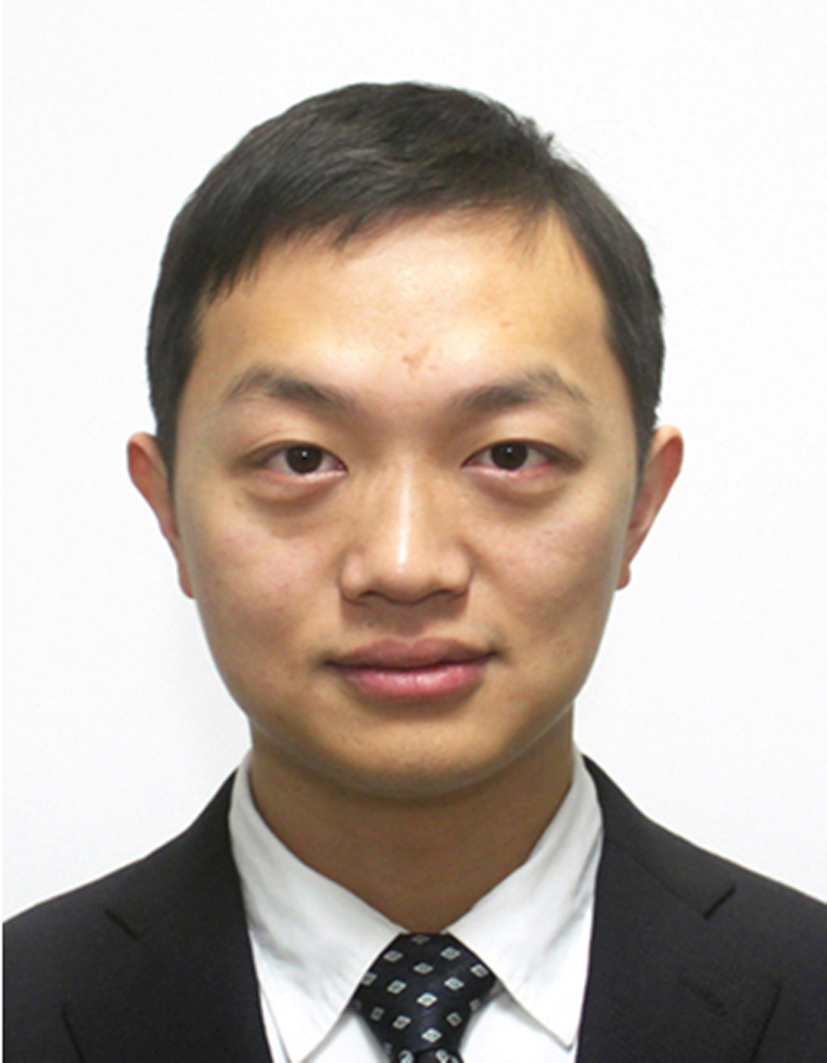 |
Title: Intelligent Collaboration of Air-Ground Vehicles for Smart Cities
Invited Speaker 13: Dr. Peng Li
The University of Aizu, Japan
|
Abstract. There is a growing trend of applying unmanned air vehicles and ground vehicles in various scenarios (e.g., military, package delivery and agriculture) in recent years. This talk will present a promising design of air-ground vehicle system with collaborative intelligence by integrating these two technologies. I will show an example of applying the proposed design in disaster management. Specifically, after big disasters, a damaged area can be out of contact because of severe damage of existing network infrastructures. Meanwhile, high demands for network connections to the disaster area will arise to collect damage information and disseminate rescue instructions. To address this challenge, a vehicle-assist resilient information and network system for disaster management is designed, despite of the Internet unavailability. An online algorithm is proposed to schedule vehicles to conduct disaster management tasks, without any knowledge of future task arrivals.
Biography. Peng Li received his BS degree from Huazhong University of Science and Technology, China, in 2007, the MS and PhD degrees from the University of Aizu, Japan, in 2009 and 2012, respectively. Dr. Li is currently an Associate Professor in the University of Aizu, Japan. His research interests mainly focus on cloud computing, Internet-of-Things, big data systems, as well as related wired and wireless networking problems. He won the Young Author Award of IEEE Computer Society Japan Chapter in 2014. He won the Best Paper Award of IEEE TrustCom 2016. He supervised students to win the First Prize of IEEE ComSoc Student Competition in 2016. He is a member of IEEE.
Top↑














